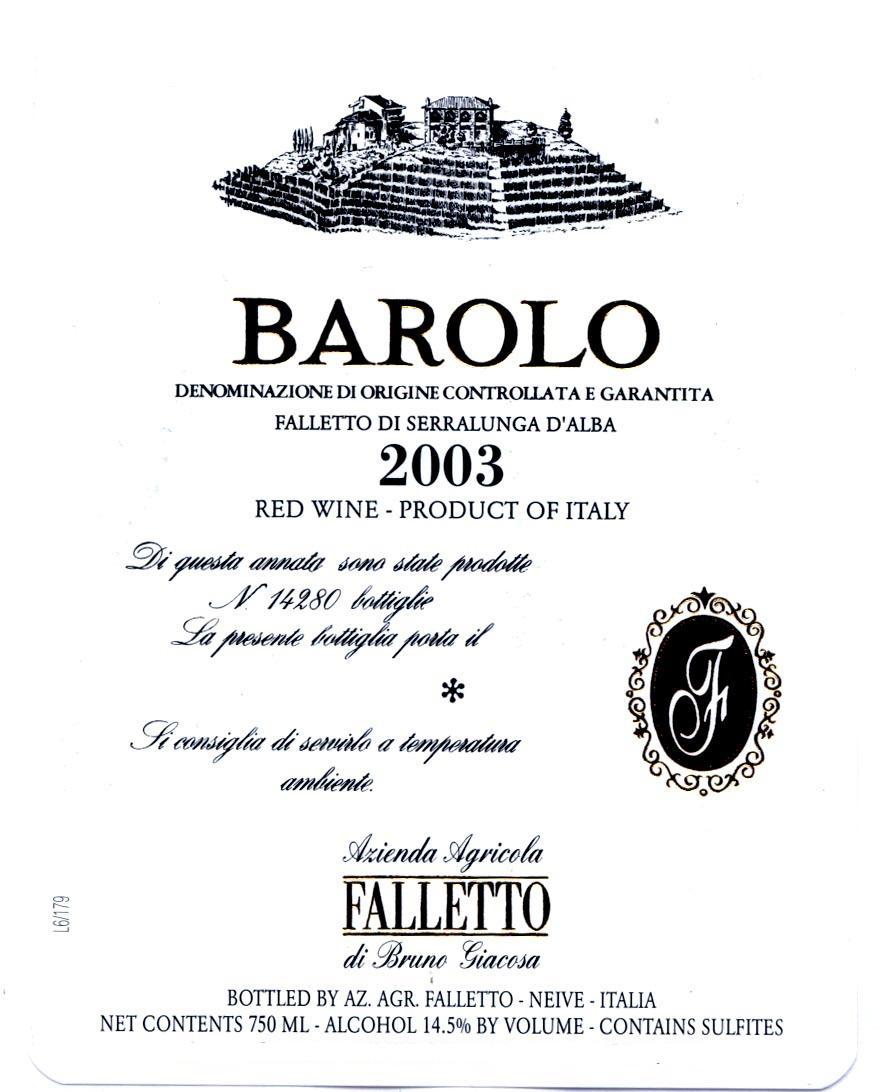2003 Barolo Nebbiolo
The Bruno Giacosa Barolo from the prestigious Barolo region embodies the essence of outstanding Italian winemaking. Crafted from the revered Nebbiolo grape, this captivating red wine presents a rich garnet hue that invites you in. With a full-bodied character, it showcases an impressive structure supported by pronounced acidity and robust tannins that promise age-worthiness and a refined mouthfeel. The fruit intensity is striking, offering deep notes of dark cherry and plum, complemented by earthy undertones and hints of rose petal. This exceptional Barolo, renowned for its complexity, is bone-dry, making it a perfect accompaniment for hearty dishes and a showcase of the magnificent terroir from which it originates.
The Bruno Giacosa Barolo from the prestigious Barolo region embodies the essence of outstanding Italian winemaking. Crafted from the revered Nebbiolo grape, this captivating red wine presents a rich garnet hue that invites you in. With a full-bodied character, it showcases an impressive structure supported by pronounced acidity and robust tannins that promise age-worthiness and a refined mouthfeel. The fruit intensity is striking, offering deep notes of dark cherry and plum, complemented by earthy undertones and hints of rose petal. This exceptional Barolo, renowned for its complexity, is bone-dry, making it a perfect accompaniment for hearty dishes and a showcase of the magnificent terroir from which it originates.




